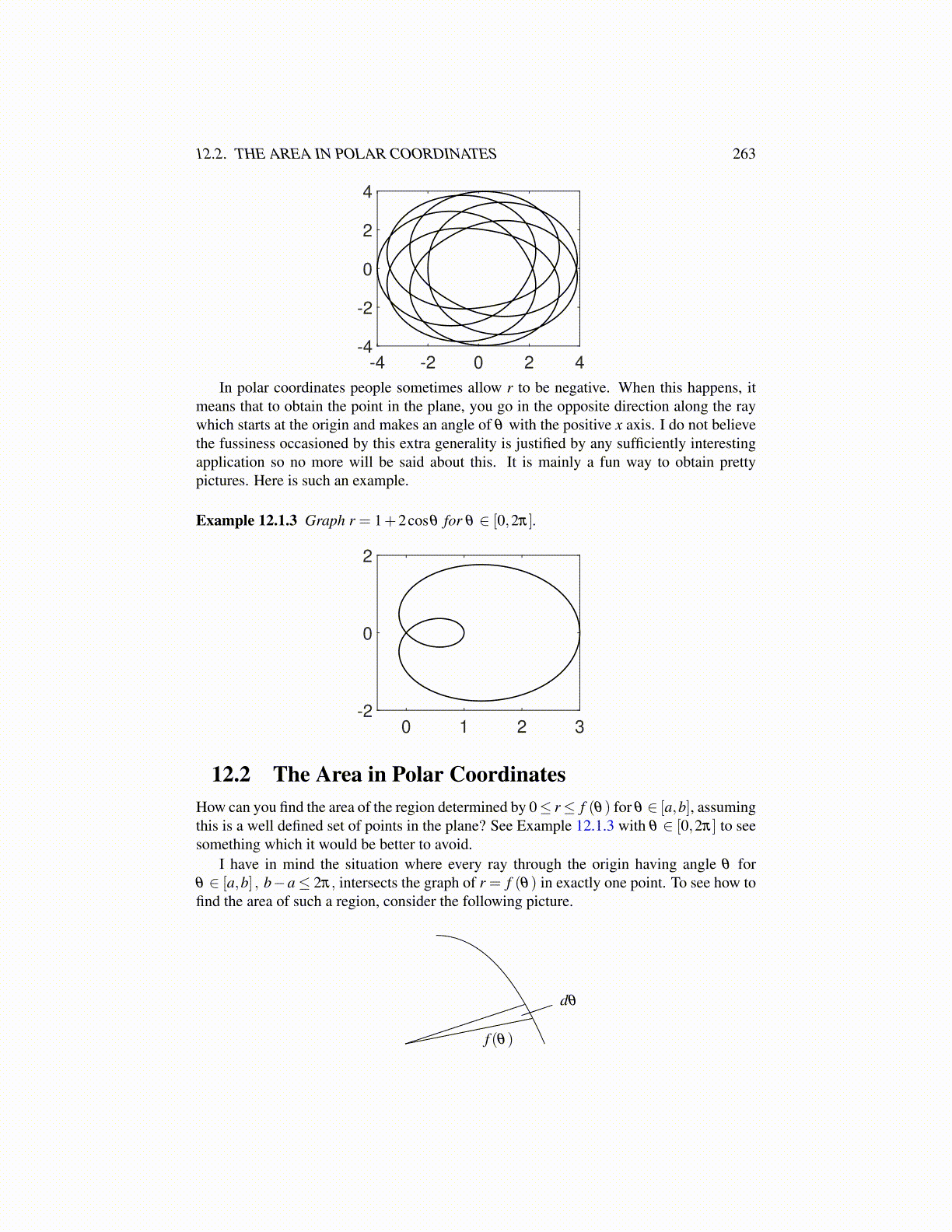
12.2. THE AREA IN POLAR COORDINATES 263
-4 -2 0 2 4-4
-2
0
2
4
In polar coordinates people sometimes allow r to be negative. When this happens, itmeans that to obtain the point in the plane, you go in the opposite direction along the raywhich starts at the origin and makes an angle of θ with the positive x axis. I do not believethe fussiness occasioned by this extra generality is justified by any sufficiently interestingapplication so no more will be said about this. It is mainly a fun way to obtain prettypictures. Here is such an example.
Example 12.1.3 Graph r = 1+2cosθ for θ ∈ [0,2π].
0 1 2 3-2
0
2
12.2 The Area in Polar CoordinatesHow can you find the area of the region determined by 0≤ r ≤ f (θ) for θ ∈ [a,b], assumingthis is a well defined set of points in the plane? See Example 12.1.3 with θ ∈ [0,2π] to seesomething which it would be better to avoid.
I have in mind the situation where every ray through the origin having angle θ forθ ∈ [a,b] , b−a ≤ 2π, intersects the graph of r = f (θ) in exactly one point. To see how tofind the area of such a region, consider the following picture.
dθ
f (θ)